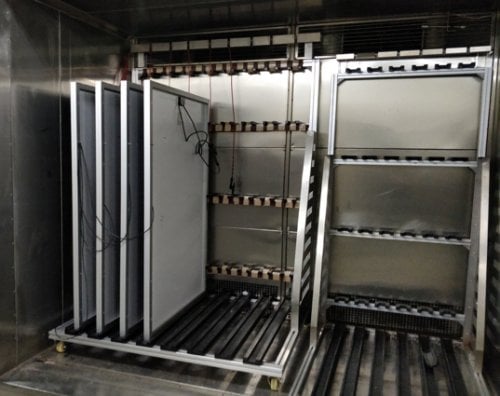Peel Strength Testing for Solar Modules
Perform Peel Strength Testing on solar modules at our Accredited PV Laboratory.
What is the Peel Strength Test?
Peel Strength testing is a simple mechanical test method which measures the peel separation strength of two flexible materials which have been adhered or bonded together. It is also known as the “T-Peel” test because of the sample shape, which resembles the letter “T” when the sample is loaded on the machine before the peel testing. Other typical methods for peel strength tests are the 90 degree peel test and the 180 degree peel test which are often used when a flexible material has been bonded to a solid material such as plastic or metal.
Why do we perform Peel Strength Testing on PV modules?
Peel strength testing measures adhesion of EVA to substrate, which is an important factor that indicates the longevity and durability of a solar module throughout its operational lifetime and guarantee its long term performance. Low adhesion force can be an indication of expired EVA material or exposure to moisture during transportation or storage or even improper laminating conditions during manufacturing.
Peel Strength testing is also essential to determine the overall quality of the lamination. It is a good test for outdoor conditions that can have high humidity and temperature.
How is the Peel Strength Test performed?
A sample of the thin material is bonded to a piece of glass using the laminator. The thin layer is then delaminated from the glass at a specific rate while the required force is measured.
Both sides of the glass plate are properly cleaned and wiped. The thin material is next laminated on the glass plate. 3 points spaced nearly half an inch from the edge of the test piece are marked and cut. Then the sample is loaded on the jaws of tensile tester and tighten securely. Tensile stress is analyzed after that to determine the Average Force measured during the test. The Peel Strength will be the average measured force divided by the width of peeled sampled.


